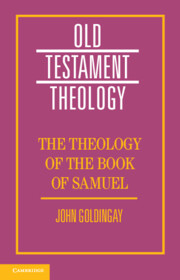539 results
Epilogue
-
- Book:
- Family Matters
- Published online:
- 27 May 2024
- Print publication:
- 31 July 2024, pp 267-273
-
- Chapter
- Export citation
Introduction
-
- Book:
- Family Matters
- Published online:
- 27 May 2024
- Print publication:
- 31 July 2024, pp 1-28
-
- Chapter
- Export citation
8 - Conclusion
-
- Book:
- Helping Friends and Harming Enemies
- Print publication:
- 13 June 2024, pp 260-273
-
- Chapter
- Export citation
7 - Family Life and Conversion in Gaul, Hispania, and Italy
-
- Book:
- Conversion and the Contest of Creeds in Early Medieval Christianity
- Print publication:
- 13 June 2024, pp 188-213
-
- Chapter
- Export citation
Introduction
-
- Book:
- The Cambridge Edition of the Correspondence of John Cleland
- Published online:
- 25 May 2024
- Print publication:
- 13 June 2024, pp 1-28
-
- Chapter
- Export citation
10 - Sentimental Literature and the Erotics of Identification
- from Queer Literary Movements
-
-
- Book:
- The Cambridge History of Queer American Literature
- Published online:
- 17 May 2024
- Print publication:
- 06 June 2024, pp 192-208
-
- Chapter
- Export citation
Chapter 12 - Debussy and the Family in Third-Republic France
- from Part III - People and Milieu
-
-
- Book:
- Debussy in Context
- Published online:
- 23 May 2024
- Print publication:
- 23 May 2024, pp 117-125
-
- Chapter
- Export citation
Chapter 33 - Goethe’s Portrayal of Love
- from Part VI - Goethe’s Lasting Significance
-
-
- Book:
- Goethe in Context
- Published online:
- 16 May 2024
- Print publication:
- 23 May 2024, pp 323-331
-
- Chapter
- Export citation
Chapter 13 - Romantic Relationships
- from Part III - People and Milieu
-
-
- Book:
- Debussy in Context
- Published online:
- 23 May 2024
- Print publication:
- 23 May 2024, pp 126-134
-
- Chapter
- Export citation
9 - Marriage and Families in the History of Sexuality
-
-
- Book:
- The Cambridge World History of Sexualities
- Published online:
- 26 April 2024
- Print publication:
- 16 May 2024, pp 183-205
-
- Chapter
- Export citation
Factors associated with family decision-making self-efficacy among family members of patients with advanced cancer in mainland China
-
- Journal:
- Palliative & Supportive Care , First View
- Published online by Cambridge University Press:
- 13 May 2024, pp. 1-7
-
- Article
- Export citation
Chapter 2 - Yahweh Who Prepares the Way for a King (1 Samuel 1:1–4:1a)
-
- Book:
- The Theology of the Book of Samuel
- Published online:
- 08 May 2024
- Print publication:
- 09 May 2024, pp 14-49
-
- Chapter
- Export citation
Chapter 2 - Friends and Family
- from Part I - Personal
-
-
- Book:
- Jonathan Swift in Context
- Published online:
- 02 May 2024
- Print publication:
- 09 May 2024, pp 10-17
-
- Chapter
- Export citation

The Theology of the Book of Samuel
-
- Published online:
- 08 May 2024
- Print publication:
- 09 May 2024
Christian Family Life in South Africa - Convening Black Intimacy: Christianity, Gender, and Tradition in Early Twentieth-Century South Africa Natasha Erlank. Athens, OH: Ohio University Press, 2022. Pp. 288. $80.00, hardcover (ISBN: 9780821424988); $34.95, paperback (ISBN: 9780821424995).
-
- Journal:
- The Journal of African History , First View
- Published online by Cambridge University Press:
- 08 May 2024, pp. 1-3
-
- Article
- Export citation
Predictors of emergency preparedness among parents in Hawaii: A cross-sectional survey
-
- Journal:
- Disaster Medicine and Public Health Preparedness / Accepted manuscript
- Published online by Cambridge University Press:
- 03 May 2024, pp. 1-27
-
- Article
- Export citation
Chapter 7 - Like One of the Family
- from Part II Introduction
-
- Book:
- Domestic Service in the Soviet Union
- Published online:
- 25 April 2024
- Print publication:
- 02 May 2024, pp 210-240
-
- Chapter
- Export citation
An Assessment of the Doctrine of Commorientes and Its Implications for the Devolution of Testate and Intestate Property in Ghana
-
- Journal:
- Journal of African Law / Volume 68 / Issue 2 / June 2024
- Published online by Cambridge University Press:
- 30 April 2024, pp. 263-281
- Print publication:
- June 2024
-
- Article
-
- You have access
- Open access
- HTML
- Export citation
Late-life divorce and familyhood interplaying: a familial and dyadic perspective
-
- Journal:
- Ageing & Society , First View
- Published online by Cambridge University Press:
- 25 April 2024, pp. 1-22
-
- Article
-
- You have access
- Open access
- HTML
- Export citation
Parental Love and Filial Equality
-
- Journal:
- Canadian Journal of Philosophy / Volume 53 / Issue 3 / April 2023
- Published online by Cambridge University Press:
- 15 April 2024, pp. 256-270
-
- Article
-
- You have access
- Open access
- HTML
- Export citation



